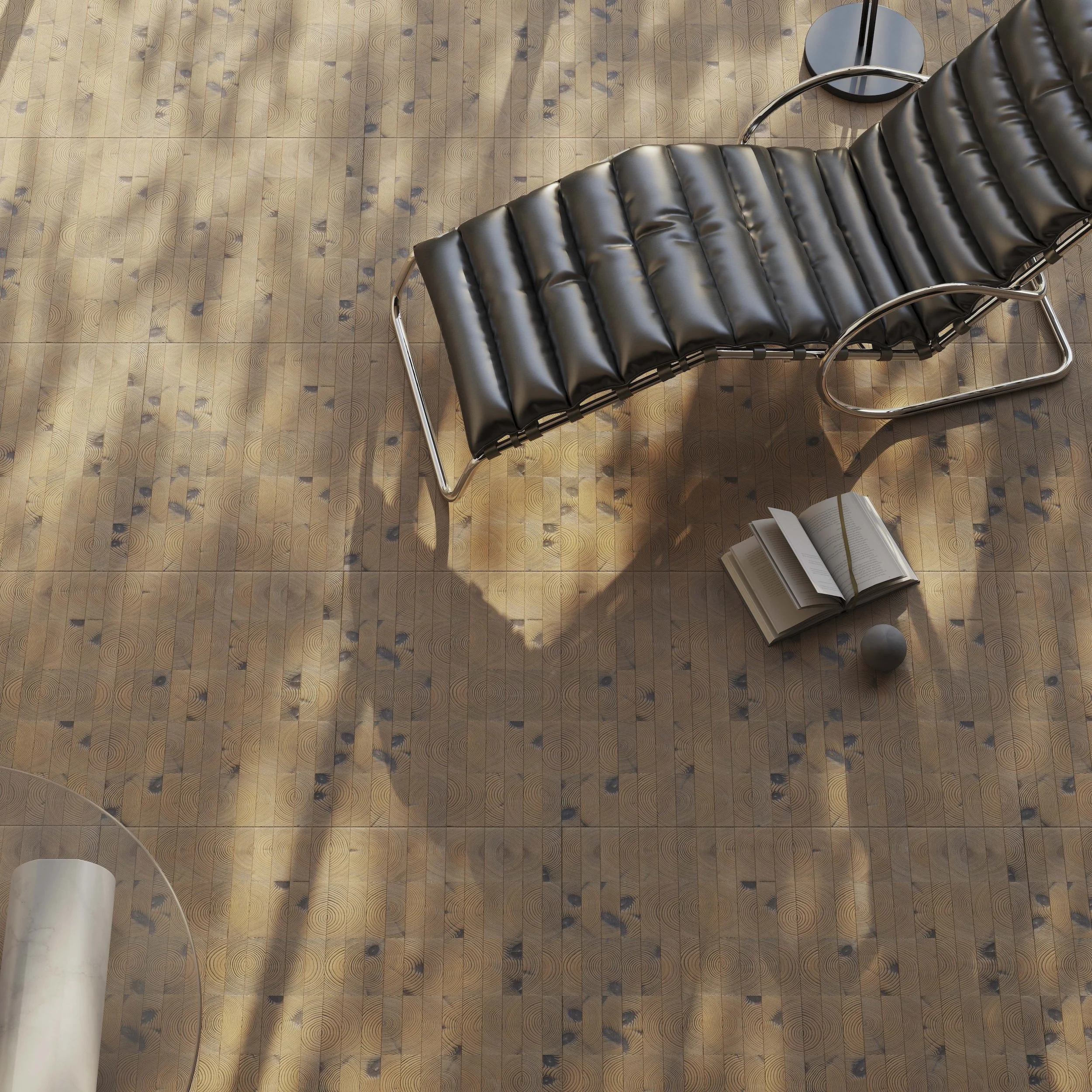Foot Traffic
Marc Sadler’s latest collection with luxury flooring company Listone Giordano was inspired by 19th century wooden pavements, and industrialises a technique that fell out of favour due to industrialisation (image: Listone Giordano).
“When you’re a designer and you use a beautiful, expensive material, of course you can make beautiful things,” says industrial designer Marc Sadler, reflecting on Trafic, his latest collection with luxury flooring company Listone Giordano. “But when you use a poor material, and this material sparks interest, it’s much more interesting.”
Trafic is made up of rectangular tiles of pine wood that ripple with tree rings. Wood knots are scattered across the parquet like stones that have just been skipped across a lake. As a softwood, pine is an unusual choice for Listone Giordano, which typically trades in more expensive and durable hardwoods. But by using end-grain wood, which is cut across the growth rings at a 90°-angle to the grain, Sadler’s design is able to emphasise both the character and the durability of pine. “The end grain has a very strong resistance, which is very close to metal,” Sadler says, explaining that the angle of the wood cut naturally resists scraping and general wear while also exposing the texture of its growth rings. The collection was inspired by 19th-century wooden pavements made with end-grain wood which were once popular across Europe, providing a quieter, cheaper and safer alternative to stone cobbles. “The beauty of this product is that it’s so random,”he says. “You even see the defects of the wood, where the branches used to grow and snapped off. It’s not always centred, not always perfect – it’s a rustic pavement.”
The design uses end-grain wood, which is cut across the growth rings at a 90°-angle to the grain, a technique which emphasises the texture of the pine’s growth rings (image: Listone Giordano).
Sadler’s career has been defined by material experimentation, which he honed through his experience in sports design. He developed the first completely recyclable thermoplastic ski boot in the 1970s, for example, and his motorcyclist’s back protector for Dianese, which is shaped like the protective shell of a lobster, is displayed in the MoMA’s permanent collection.“I'm a troublemaker in a certain way,” Sadler says, “because I disturb the chain of making things.” His previous collaboration with Listone Giordano in 2018, Fabrique, introduced the company to working with end-grain wood. “It started really by accident: I was visiting the factory and I saw all these slats in huge columns being prepared,” Sadler says, describing the birch plywood the company uses as a support underneath its parquet designs. By turning the plywood onto its end grain and exposing the layers of wood veneer, Sadler’s design increased its durability and created an aesthetic that resembled a piece of woven fabric. “Normally, you're very proud of the essence of the wood that you're using,” he says. “But in this case, I wanted to use wood as a fibre.”
Workers paving a street in Paris in 1899 with end-grain wood (image: Listone Giordano).
However, Sadler and Listone Giordano’s technical team had to overcome the limitations of end-grain wood, which include its tendency to soak up moisture. “If you put a drop of water on it, then it expands – it’s really a sponge,” Sadler says. After developing a treatment which saturates the wood with resin, the team was able to seal the surface of the wood and protect it from water damage. “Artisans use [end-grain wood], but nobody has ever used it in an industrial way,” Sadler says. “We had to control the absorption and water resistance so that we can send it to Japan, China or America, and it will work there even if the humidity is different.” The wooden pavements which inspired Trafic were gradually replaced by asphalt and concrete, and Sadler’s design comes full circle by industrialising a technique which fell out of favour due to industrialisation. “Now, we feel confident in making things which are even more complex,” Sadler says. “It's going to be a long story together.”
Words Helen Gonzalez Brown



